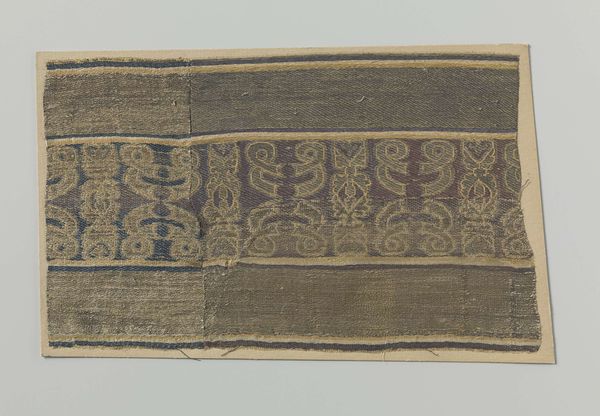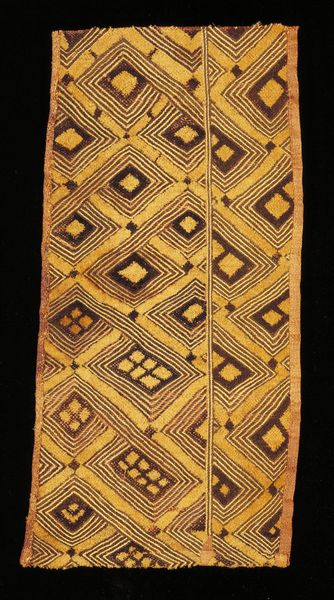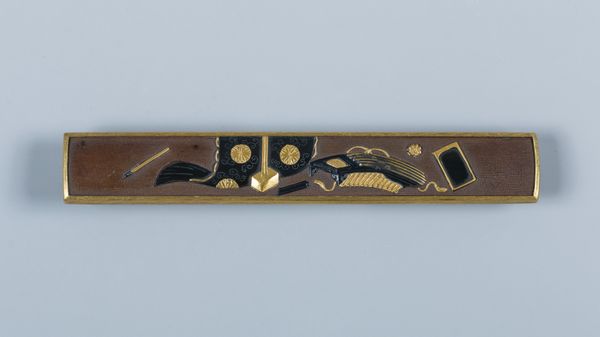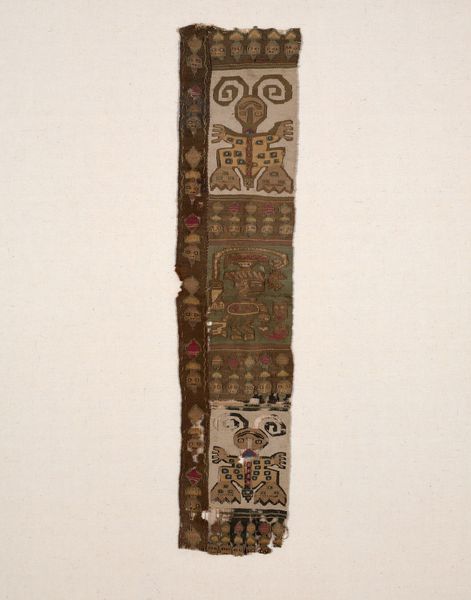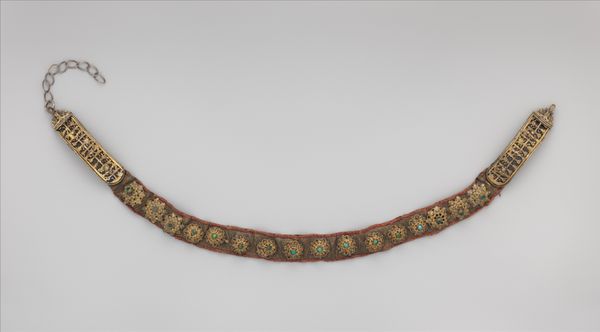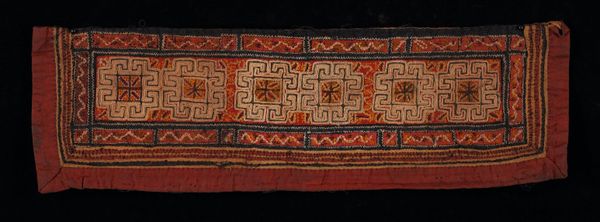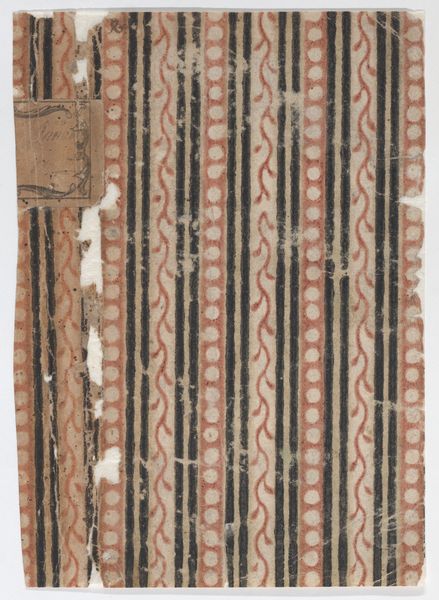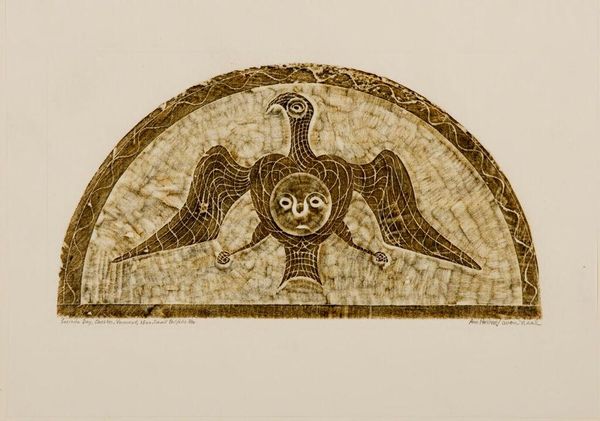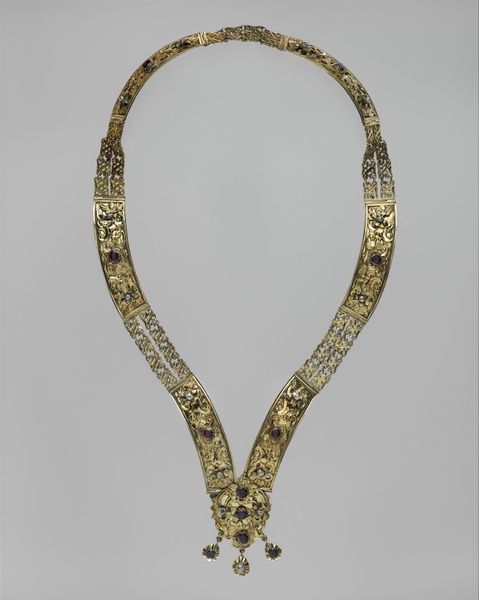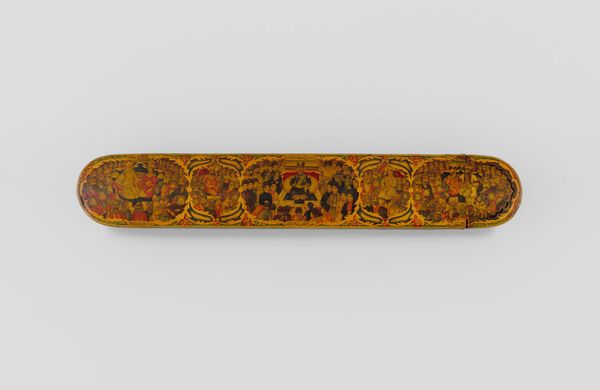
Section of Border from Thanka (Religious Picture) 18th century, Qing dynasty (1644–1911)
0:00
0:00
weaving, textile
#
natural stone pattern
#
pattern used
#
wave pattern
#
man-made pattern
#
weaving
#
textile
#
text
#
abstract pattern
#
repetitive shape and pattern
#
3d shape
#
minimal pattern
#
simple pattern
#
china
#
combined pattern
Dimensions: 156.1 × 9.5 cm (61 1/2 × 3 3/4 in.)
Copyright: Public Domain
Curator: The geometric precision in this section of border is immediately striking. It has an almost hypnotic quality to it. Editor: It's from a Thangka, a religious picture, dating back to the 18th century during the Qing Dynasty in China. The repeating pattern creates an overall sense of order and balance, despite being, technically, a fragment. Curator: Yes, but consider the psychology of borders, particularly in religious art. This woven fragment pulses with the energy that it once contained within the now lost or destroyed religious whole. Does the labyrinth pattern symbolize life’s path? Editor: It's crucial to consider its function, right? As a section of a border, its inherent purpose was to frame something of immense spiritual significance, drawing the eye inward. It's textile-based—woven—a medium deeply intertwined with domesticity and labor, though its purpose here transcends those everyday associations. Curator: Exactly. That's where its power resides! A repetition of shape echoing into cultural memory, triggering not a personal narrative but the long-shared experience of order itself. But is that repetition and order inherently connected with systems of power in the Qing Dynasty? Editor: Good question! Textiles in the Qing Dynasty were strictly controlled and used to denote social standing and convey imperial authority, but I wouldn't suggest that imperial overreach completely dictates this Thangka's iconography. Curator: Certainly, the context of artistic creation must be seen against the background of state-level organization. Even in fragments, works such as these offer continuity for us, a common experience, however fractured. Editor: Agreed, reflecting on it now, the simple geometry of the design hints at underlying power dynamics and its potential role within a broader network of cultural meanings.
Comments
No comments
Be the first to comment and join the conversation on the ultimate creative platform.

